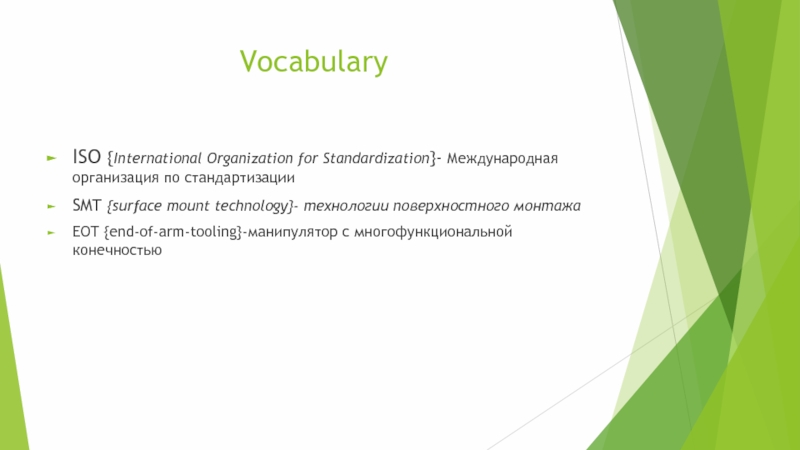Vocabulary
ISO {International Organization for Standardization}- Международная организация по стандартизации
SMT {surface
mount technology}- технологии поверхностного монтажаEOT {end-of-arm-tooling}-манипулятор с многофункциональной конечностью






























